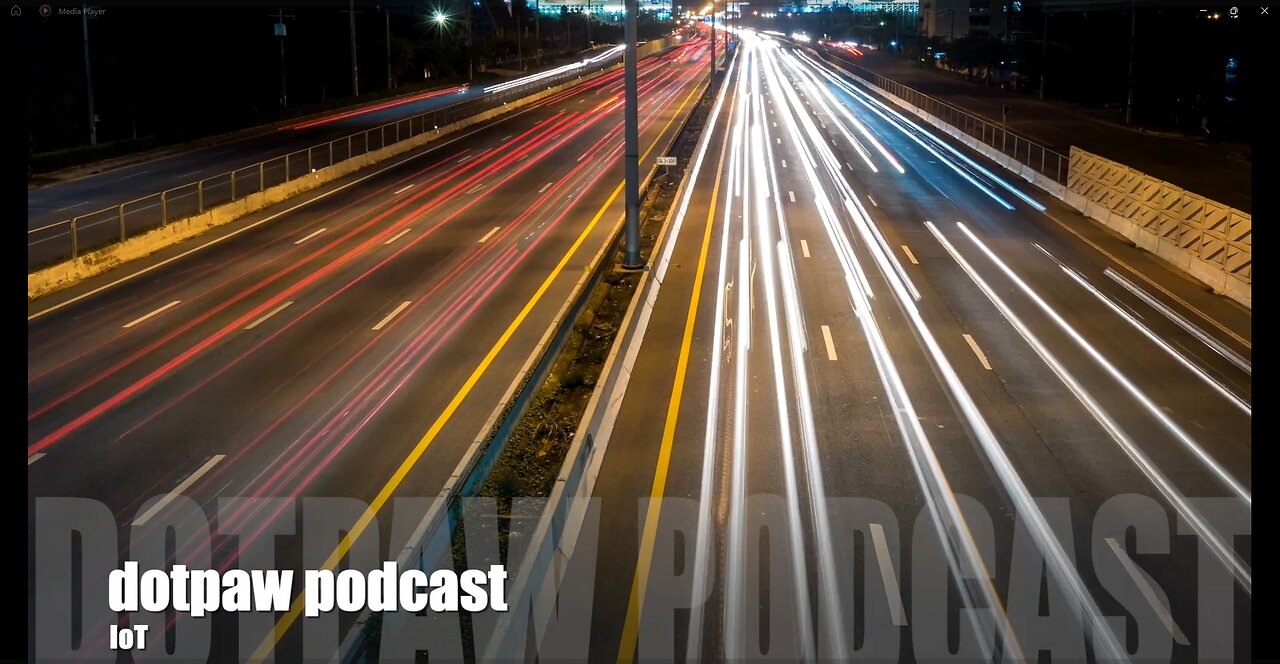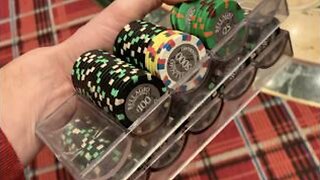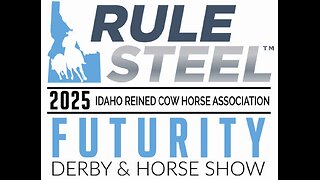Premium Only Content

dotpaw podcast - IoT
dotpaw podcast - stuff about stuff
https://rumble.com/c/dotpawpodcast [new episodes]
https://www.buzzsprout.com/2033334 [100 episode archive]
https://www.stickermule.com/dotpaw1 - Click on the link and grab some stickers. :)
episode - IoT
The Internet of Things (IoT) refers to the network of interconnected devices and sensors that collect and share data over the internet. Here's a comprehensive overview:
Definition and Concept
- IoT involves embedding electronic devices with sensors, software, and network connectivity, allowing these devices to exchange data with other devices and systems over the internet. This connectivity enables:
- **Automation** of tasks
- **Remote monitoring**
- **Data collection** for analysis
Applications
- **Smart Homes**: Devices like smart locks, thermostats (e.g., Nest), lighting systems, and security cameras.
- **Healthcare**: Wearable health monitors, remote patient monitoring systems, smart pills, etc.
- **Industrial IoT (IIoT)**: For manufacturing, predictive maintenance, supply chain management.
- **Agriculture**: Precision farming with sensors for soil moisture, crop health monitoring.
- **Urban Development**: Smart cities with traffic management, waste management, and public safety systems.
- **Energy Management**: Smart grids, smart meters for energy consumption monitoring and optimization.
Challenges
- **Security**: IoT devices can be vulnerable to hacking, leading to privacy issues or even physical harm if, for example, a smart home system is compromised.
- **Interoperability**: Many devices operate on different protocols, making integration challenging.
- **Data Privacy**: Concerns over how data is collected, used, and protected.
- **Scalability**: Managing a growing number of devices and the data they generate.
- **Energy Consumption**: The power usage of always-on devices.
Understanding IoT involves acknowledging its transformative potential across various sectors while also being mindful of the ethical, security, and practical challenges it presents. If you need further details on specific IoT applications or technologies, feel free to ask.
Here are some of the best IoT ideas for 2025, based on current trends, technological advancements, and emerging needs:
Smart Home Innovations
Healthcare
Agriculture
Industrial and Manufacturing
Urban Development (Smart Cities)
Energy Management
Writing code for IoT (Internet of Things) devices involves several steps and considerations, given the diverse nature of IoT applications. Here's a general guide on how to approach coding for IoT:
- Hardware: Know the specifics of the hardware you're working with, such as microcontrollers (like Arduino or ESP8266), sensors, actuators, or specialized IoT boards.
- Communication Protocols: Familiarize yourself with common IoT protocols like MQTT, CoAP, HTTP/HTTPS, Zigbee, Z-Wave, or Bluetooth Low Energy (BLE).
- Platform: Consider whether you're working with a cloud platform like AWS IoT, Google Cloud IoT Core, or Azure IoT, or if you're managing everything on-premises.
2. Choose Your Programming Language
- Microcontroller Programming:
- C/C++: Commonly used for embedded systems due to performance and resource constraints.
- Python: Often used on more powerful boards like Raspberry Pi, especially with microPython for microcontrollers.
- Cloud or Gateway Programming:
- JavaScript, Python, Java, or Go: Depending on the backend services or cloud environments you're interfacing with.
4. Writing the Code
For the Device:
- **Setup and Loop**:
```cpp
void setup() {
// Initialize serial communication, pins, sensors
Serial.begin(9600);
pinMode(LED_BUILTIN, OUTPUT);
}
void loop() {
// Main loop where you read sensors, send data, etc.
int sensorValue = analogRead(A0); // Example sensor reading
Serial.println(sensorValue); // Send data to serial monitor
delay(1000); // Wait for a second
}
```
https://www.ibm.com/think/topics/internet-of-things
https://www.oracle.com/internet-of-things/
https://www.sas.com/en_us/insights/big-data/internet-of-things.html
-
 22:56
22:56
American Thought Leaders
1 day agoCharles Murray: I Thought Religion Was Irrelevant to Me. I Was Wrong.
2.41K2 -
 36:22
36:22
Brad Owen Poker
2 hours agoGIGANTIC $17,000+ Pot In BOBBY’S ROOM! TRAPPING Top Pro w/FULL HOUSE!! Big Win! Poker Vlog Ep 326
5 -
 3:53
3:53
NAG Daily
19 hours agoRUMBLE RUNDOWN: DREAM HACK SPECIAL W/Greenman Reports
1955 -
 1:28
1:28
Damon Imani
1 day agoThey Laughed at Trump’s Cognitive Test — Damon Made Them REGRET It!
6175 -
 9:14
9:14
Freedom Frontline
21 hours agoAdam Schiff PANICS As Eric Schmitt Exposes His Dirty Lies LIVE
2172 -
 10:32
10:32
GBGunsRumble
23 hours agoGBGuns Armory Ep 153 Adler Arms AD-9`
191 -
 35:53
35:53
Degenerate Plays
1 hour agoRuckus Randy And Repair Ronald (Socks On) - Call of Duty: Modern Warfare 2 (2009) : Part 7
8 -
 38:35
38:35
Stephen Gardner
21 hours ago🔥What JUST leaked out of Congress. PROVES Trump RIGHT!!
52.4K108 -
 LIVE
LIVE
Total Horse Channel
13 hours ago2025 IRCHA Derby & Horse Show - November 2nd
109 watching -
 1:59:42
1:59:42
Game On!
19 hours ago $35.19 earnedNFL Week 9 Wise Guy Roundtable BEST BETS!
135K13